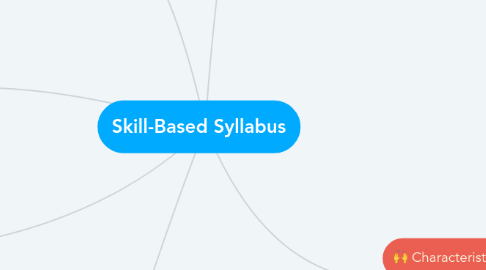Skill-Based Syllabus
Door Cristy Plascencia


1. What is a skill?
1.1. Generally, skill means an ability to do an activity or job well. it involves someone who has had special training and practicing to do it.
2. Advantages
2.1. 1. Skill-based content is most useful when learners need to master specific types of language uses.
2.2. 2. It is possible to predict at least what material that students really need.
2.3. 3. Relevance on student-felt needs or wants .
3. Disadvantages
3.1. Under the right circumstance, the skill based syllabi has few drawbacks. Up till now, there is a theoretical question about this kind of syllabus. That is about the whether the degree to which ability to perform specific in language is dependent overall language proficiency or not.
3.2. Besides that, there are different opinions about this syllabus related to the relationship between skill instruction ad general language proficiency. One side believes that skill based syllabus will be helpful because someone learns language specifically. But other side said that this syllabus will limit some one’s general language proficiency
4. What is a skill in language teaching?
4.1. The term “skill” in language teaching is used as a specific way of using language that combines structural and functional ability.
5. What is a Skill-based Syllabus?
5.1. In skill-based syllabus, the content of the language teaching involves a collection of particular skills that may play a role in using language.
5.1.1. There are four mode understanding the language:
5.1.1.1. Reading
5.1.1.2. Writing
5.1.1.3. Listening
5.1.1.4. Speaking
6. Characteristics
6.1. 1. Skills are things that people must be able to do to be competent in a language, relatively independently of the situation or setting in which the language use can occur
6.2. 2. The content of the skill-based language teaching is a collection of specific abilities that may play a part in using language.
6.3. 3. The primary objective of a skill-based instruction is to teach a specific language skill, such as listening for gist, using proper intonation contours, reading for the main idea, or using cohesive devices in writing. These specific skills are immersed with specific linguistic competencies, such as pronunciation, vocabulary, grammar, and discourse
6.4. 4. The skills-based approach drew its theoretical roots from behavioral psychology and structural linguistics. Specifically, it is based on the following principles:
6.4.1. (a) The whole is equal to the sum of its parts;
6.4.2. (b) There are differences between spoken and written language;
6.4.3. (c) Oral language acquisition precedes the development of literacy;
6.4.4. (d) Language learning is teacher-directed and fact-oriented;
6.4.5. (e) Student errors are just like ‘sins’ which should be eliminated at all cost.

